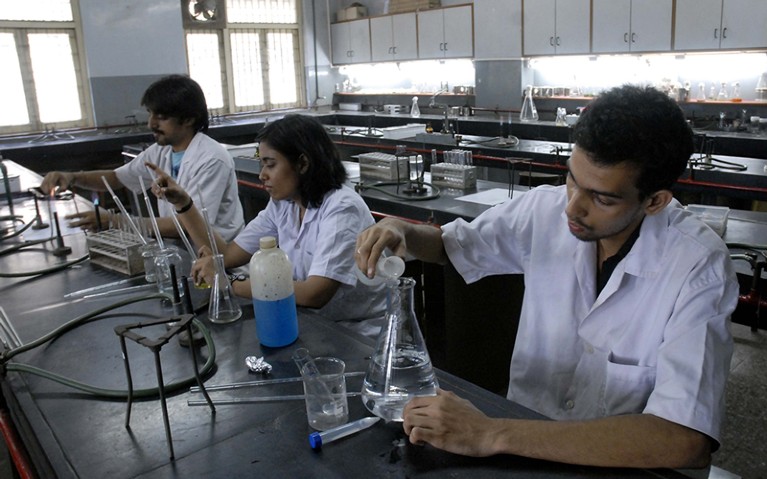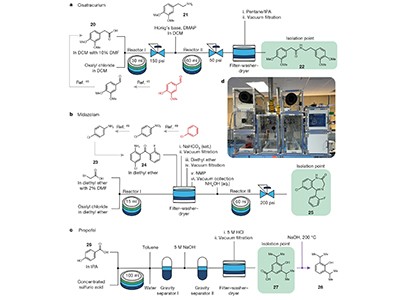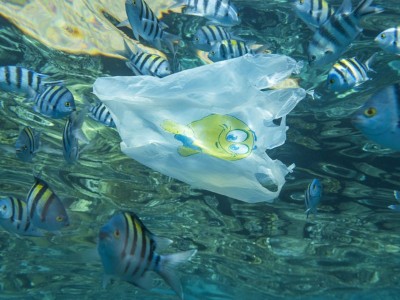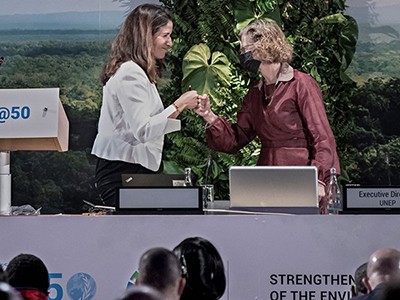
Classroom chemistry needs to equip pupils and students with the knowledge and skills to design products in a way that minimizes harm.Credit: Kalpak Pathak/Hindustan Times/Getty
Generations of chemists have taken what nature has to offer and converted it into hugely beneficial products — from drugs to dyes and from fertilizers to food packaging. But the current environmental crisis, in terms of both carbon emissions and plastics pollution, is also a creature of chemistry. And that means chemists must re-engineer their working methods as part of efforts to solve it — including rethinking how current and future generations of chemists are educated. This is happening, although nowhere near as quickly as it needs to.
Read the paper: Computer-designed repurposing of chemical wastes into drugs
In Nature this week, chemist Bartosz Grzybowski at the Ulsan Institute of Science and Technology in South Korea and his colleagues describe one such effort, which uses artificial intelligence to repurpose waste compounds into useful products. Algorithms trained on thousands of reactions suggested ways to create some 300 known chemicals used in pharmaceuticals and agriculture. They include the antibiotic dapsone and a key intermediate for a muscle relaxant called cisatracurium, a drug that has been used in the treatment of people with COVID-19.
The work is among the latest contributions to green chemistry, a movement that began in the 1990s with efforts to find environmentally friendly ways to carry out chemical reactions, by using greener solvents, say, or less energy-intensive reaction conditions. Since then, there have been advances, such as improvements in plastics recycling and the development of catalysts that can break down otherwise indestructible materials into smaller, more useful molecules. Sustainable chemistry research is expected to get a further boost as talks get under way on a legally binding international treaty aimed at eliminating plastic pollution.
But for research to progress faster, a reset is needed in the classroom, too — in both school and university teaching. Chemistry education needs to change so that students are taught how to design drugs and agrochemicals, such as fertilizers, in ways that are both safe and sustainable.
Some universities are now offering postgraduate courses in environmental, green or sustainable chemistry, and school and undergraduate chemistry courses are increasingly incorporating the chemistry of climate change, and covering chemistry’s health, environmental and social impacts.
Chemistry can make plastics sustainable – but isn’t the whole solution
But equipping pupils and students with the knowledge and skills to design products in a way that minimizes or eliminates harm is a greater challenge. In many countries, sustainability is not yet treated as a core or underpinning concept in undergraduate and senior-school chemistry. Concerningly, in many nations, school chemistry curricula remain similar to those taught several decades ago.
Researchers who study chemistry in education are advocating that curricula be based on a systems-thinking approach. This would teach students both how to understand the connections between the elements that make up a chemical compound or product, and how to quantify chemistry’s wider impacts — for example, on the economy and society, the environment and human health.
At the same time, some core components of chemistry syllabuses are also ripe for a rethink. Organic chemistry is one example, according to David Constable at the American Chemical Society’s Green Chemistry Institute in Washington DC and his colleagues (D. J. C. Constable J. Chem. Educ. 96, 2689–2699; 2019). Organic chemistry courses are “largely oriented toward the transformations of carbon compounds from fossil sources using chemical reagents and catalysts”, the authors write in a commentary in a special issue of the Journal of Chemical Education devoted to reimagining chemistry education. Many such compounds are difficult to recycle and reuse — or recycling is considered an afterthought. Moreover, the reagents involved can be hazardous. The researchers propose that more students should study the chemistry of compounds produced by living organisms — a topic taught in biochemistry courses — as well as compounds that are easier to recycle. Doing so would help students to design products that are biodegradable, or that can more easily be broken down into their most benign parts, ready to find other uses.
Landmark treaty on plastic pollution must put scientific evidence front and centre
Universities and chemistry’s professional societies recognize what is needed and are helping to effect change. Imperial College London has suspended two long-running master’s courses — in petroleum engineering and petroleum geoscience. The American Chemical Society has an active programme of research and engagement in sustainable chemistry education, with a strong focus on systems thinking. The United Kingdom’s Royal Society of Chemistry (RSC) has said that it recognizes that school chemistry is not adequately preparing the next generation for a world dominated by climate change and sustainability, and is recommending changes to schools’ curricula.
Last year, the RSC carried out a survey of chemistry educators and students in the United Kingdom and Ireland that revealed that not all teachers (particularly those teaching pupils aged 16 and over) are confident that they have the subject knowledge to be teaching chemistry in a different way. But the survey also revealed that pupils are keen to know more. The school-aged respondents told the society that they are deeply concerned about climate change and are interested in careers that involve sustainability.
The challenges inherent in introducing difficult concepts are unavoidable. But if students are willing to learn — as the RSC survey suggests — that will make the task more fulfilling, and will ensure that the next generation of chemists has the knowledge and the skills to lead a much-needed revolution.

 Read the paper: Computer-designed repurposing of chemical wastes into drugs
Read the paper: Computer-designed repurposing of chemical wastes into drugs
 Chemistry can make plastics sustainable – but isn’t the whole solution
Chemistry can make plastics sustainable – but isn’t the whole solution
 Landmark treaty on plastic pollution must put scientific evidence front and centre
Landmark treaty on plastic pollution must put scientific evidence front and centre
 Read the paper: Closed-loop recycling of polyethylene-like materials
Read the paper: Closed-loop recycling of polyethylene-like materials








